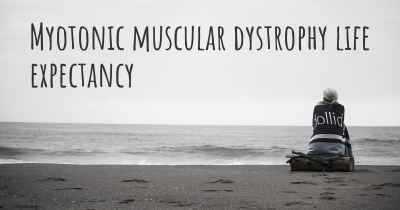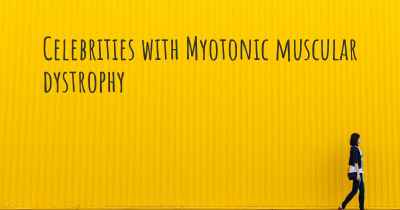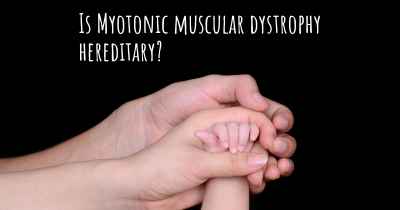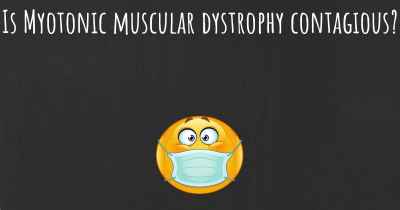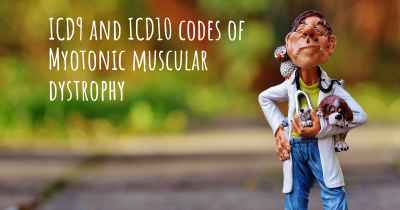What is the history of Myotonic muscular dystrophy?
When was Myotonic muscular dystrophy discovered? What is the story of this discovery? Was it coincidence or not?
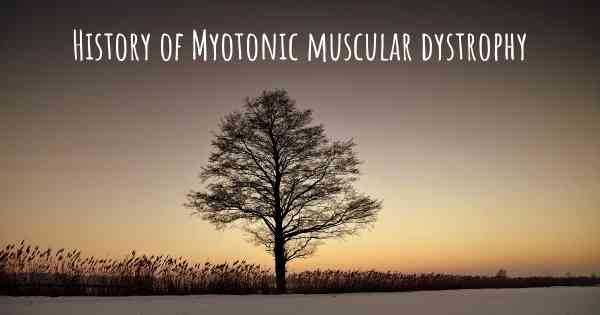
Myotonic muscular dystrophy (MMD), also known as Steinert's disease, is a genetic disorder characterized by progressive muscle weakness and myotonia, a delayed relaxation of muscles after contraction. It is the most common form of muscular dystrophy in adults, affecting approximately 1 in 8,000 individuals worldwide. MMD is an autosomal dominant disorder, meaning that an affected individual has a 50% chance of passing the condition on to each of their children.
Discovery and Classification:
The history of myotonic muscular dystrophy dates back to the early 20th century. In 1909, the German neurologist Hans Gustav Wilhelm Steinert first described the condition in a family with multiple affected members. However, it wasn't until the 1950s that the disorder gained recognition as a distinct entity.
Genetic Basis:
MMD is caused by an abnormal expansion of repetitive DNA sequences within specific genes. There are two types of MMD, each associated with a different gene mutation:
- MMD type 1 (MMD1): This form is caused by an expansion of CTG repeats in the DMPK gene on chromosome 19. The severity of symptoms in MMD1 is often correlated with the length of the CTG repeat.
- MMD type 2 (MMD2): This form is caused by an expansion of CCTG repeats in the CNBP gene on chromosome 3. MMD2 tends to have a milder course compared to MMD1.
Clinical Features:
MMD affects multiple systems in the body, leading to a wide range of symptoms. The most prominent features include:
- Muscle Weakness: Progressive muscle weakness is a hallmark of MMD. It typically begins in the distal muscles of the limbs and gradually spreads to other muscle groups, including the face, neck, and respiratory muscles.
- Myotonia: Myotonia refers to the delayed relaxation of muscles after contraction. It can cause stiffness, difficulty releasing a grip, and impaired speech.
- Cardiac Involvement: MMD can affect the heart, leading to arrhythmias, conduction abnormalities, and in some cases, cardiomyopathy.
- Respiratory Complications: As the disease progresses, respiratory muscles may weaken, resulting in breathing difficulties and an increased risk of respiratory infections.
- Endocrine Abnormalities: MMD can also affect various endocrine glands, leading to insulin resistance, thyroid dysfunction, and reproductive issues.
Diagnosis and Management:
Diagnosing MMD involves a combination of clinical evaluation, genetic testing, and electromyography (EMG) to assess muscle function. Genetic testing can confirm the presence of the CTG or CCTG expansions in the respective genes.
Currently, there is no cure for MMD, and treatment primarily focuses on managing symptoms and improving quality of life. This may involve a multidisciplinary approach, including physical therapy, assistive devices, respiratory support, and cardiac monitoring. Regular follow-up with healthcare professionals is essential to monitor disease progression and address any complications that may arise.
Research and Future Perspectives:
Advancements in understanding the genetic basis of MMD have paved the way for potential therapeutic interventions. Researchers are exploring various strategies, including gene silencing techniques, to target the underlying genetic abnormalities and potentially halt disease progression. Clinical trials are underway to evaluate the safety and efficacy of these emerging therapies.
In conclusion, myotonic muscular dystrophy is a complex genetic disorder with a rich history of discovery and classification. While there is currently no cure, ongoing research offers hope for improved management and potential treatments in the future.
